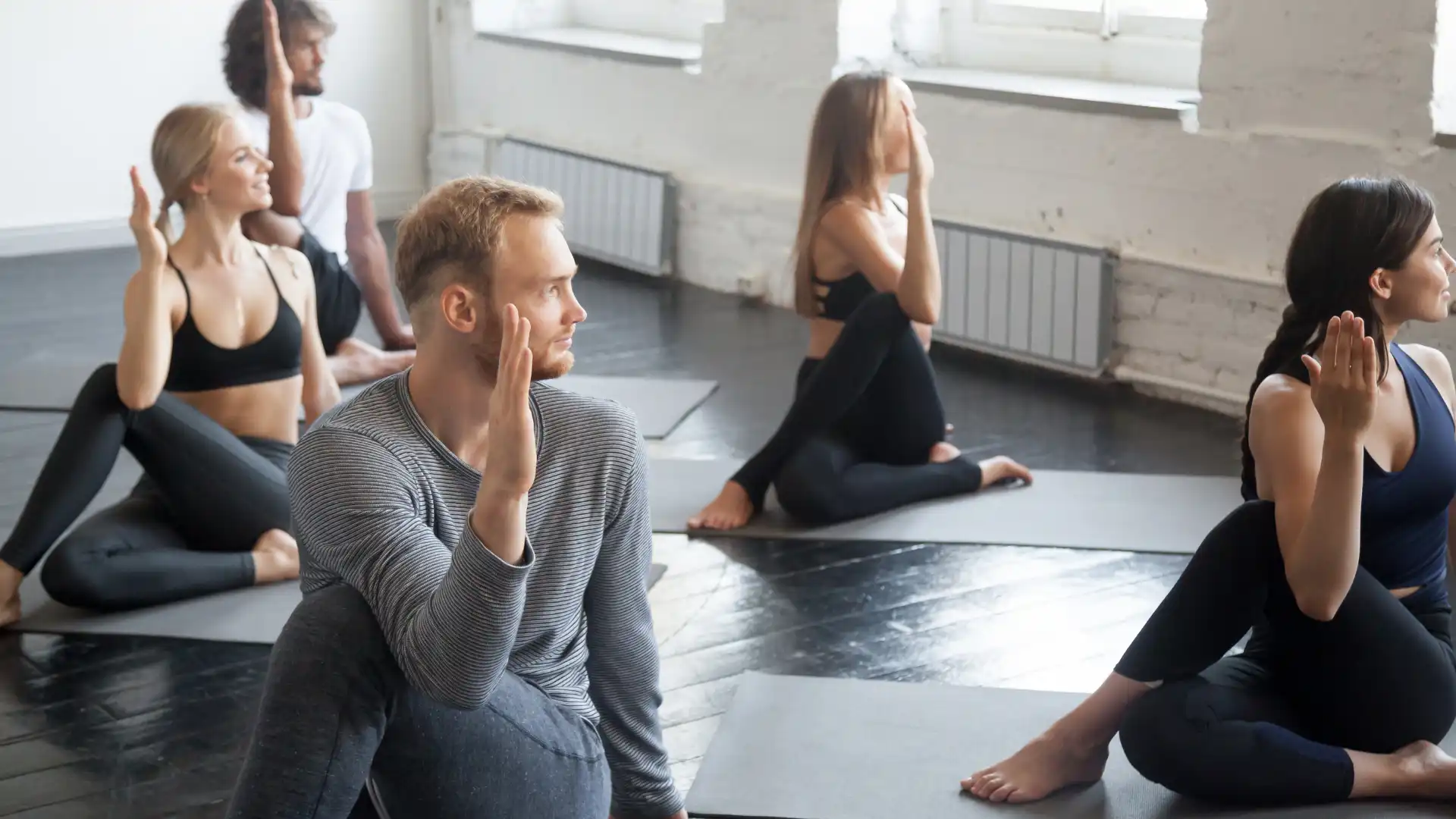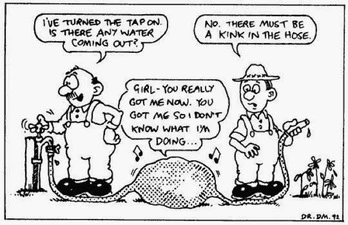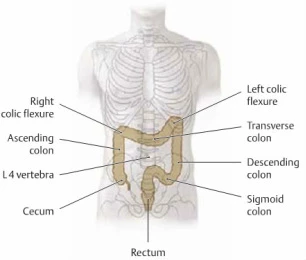Does Twisting Wring Out Your Spine, Release Toxins and Aid Digestion? The Facts About Spinal Rotation

Do twisting yoga postures wring the toxins out of our spines, and are there toxins in our spines? Or do twists provide just a digestive benefit? How significant is this benefit? If you twist left instead of right, will it constipate you? What’s a yogi to do?
All the things that we hear about yoga postures can often leave us wondering what to believe. Ultimately, we have to rely on the best knowledge and experience available to us to make our decisions. “Wringing out your spine” or twisting to release toxins is a common concept taught in yoga.
If you look at the spinal canal (the long opening inside your vertebrae that holds your spinal cord) as the Sushumna Nadi (the primary of three main nadis or channels of energy), twisting can be a way to release energy blockages and balance energy flow in the spine. Maybe maintaining this flow can be considered keeping any unwanted or even toxic energies from being “stuck” in the spine. Perhaps this can be looked at as wringing out toxins.
While not clearly supported from a scientific perspective, there is some basis for this idea. Our bodies do have toxins in the form of wastes from the normal processes in our cells. Toxins can also come into our bodies from the air we breathe and the food we eat, and various substances can even be absorbed through our skin.
In a healthy individual, there are no special toxins in the spine that are not anywhere else in the body. Our blood has the job of carrying most of these toxins and waste products to the appropriate areas for filtering and disposal. 
As for wringing things out, our bodies have a mechanism called reactive hyperemia, which is a temporary increase in blood flow to any area after blood flow has been reduced to that area. It’s kind of like putting a kink in a hose and then letting it go after the pressure builds up. Letting that kink go releases a burst of water.
In a twisting yoga pose, we can conceivably squeeze down structures, and then when we release the twist a rush of blood can come in and “flush out” the area. This, in essence, will help wring out the toxins, but I can’t say how focused this effect would be on only the spine since many things are squeezed down in a twist
Digestive Benefits of Twists in Yoga
Most of the squeezing and compression of twists probably occurs in the gut. This is why twists are known for digestive benefits.
These benefits are more widely accepted and make sense when looking at the anatomy and physiology. Digestion and elimination are affected by our autonomic nervous system (ANS). This is part of our nervous system that we cannot consciously control.
The autonomic nervous system is made of a few parts. The parasympathetic nervous system (PNS) is the part of the autonomic nervous system that helps us “rest and digest.” The parasympathetic nervous system is associated with a more calm state where your body can focus resources on regular functions such as digestion.
Its opposing partner, the sympathetic nervous system (SNS) is known to control the “fight or flight” response. It is associated with stressful situations directing resources to get your body ready for fighting or running away.
When sympathetic nervous system activity is increased, parasympathetic nervous system activity is decreased and vice versa. Stress will increase sympathetic nervous system activity, resulting in decreased parasympathetic nervous system activity, which will slow digestion and elimination.
Relaxing poses such as supine twists can reduce stress and anxiety, which helps to bring parasympathetic nervous system activity back up to help us digest and eliminate, but these poses are not limited just to twisting. There is a good amount of evidence that yoga, in general, is good for managing stress, and lower stress means better digestion.
But what about the twists themselves? As I discussed above, a lot of the squeezing and compression of a twist happens in our guts (the area below the ribs where most of your digestive organs are). Although I don’t know of any direct research on twisting asanas and digestion, there is some indirect research on abdominal massage that gives us some clues.
According to this research, physical stimulation of the abdominal area, “stimulates peristalsis, decreases colonic transit time, and increases the frequency of bowel movements.”
Simply put, abdominal massage increases movement through the digestive tract. It’s not a far stretch to think that a self-abdominal massage through a twist can help in the same way. The mechanism of why this works is not clear.
It may be due to stimulation of the enteric nervous system (ENS), the other part of the autonomic nervous system that we did not mention yet. There are a whole bunch of neurons (nerve cells) inside the digestive tract that control digestion and elimination too. Physical stimulation of the enteric nervous system may wake it up and make it work.
Right to Left or Left to Right?
As for the direction and order of twisting, it is fairly common among yogis to say always twist to the right first and then left, or bad things might happen, like constipation! This theory is based on the direction of flow in the large intestines. It goes up the right (ascending colon), across the belly (transverse colon) and then down and out (descending colon) as in the graphic.
So, the idea is to twist to the right and squeeze everything up. Then twist to the left to squeeze it down and out to keep everything moving in the correct direction. 
Based on this logic, twisting left before right would have the opposite effect, i.e., constipation. A typical abdominal massage to treat gas and constipation would follow this direction too, but for a twist, it doesn’t really make sense to me. And I’m pretty sure that I’ve twisted left before right at some point and have lived to tell about it.
For instance, if you do a yoga sequence with more than two twists in it, you will probably end up with a left twist before a right at some point. Does this mean you or your students will walk out constipated? I hope not!
If you look at the anatomy, it doesn’t seem likely. Sure, the right side will get some compression if you twist to the right, but the left side will too, as the abdominal oblique muscles on both sides contract to create the twist. The effect of the twist is not limited to one side.
It’s like wringing out a towel. You can’t just wring out one side of it. The whole thing twists together! The whole gut is stimulated and compressed.
Again, I believe that the physical stimulation to the enteric nervous system is what starts things moving in the gut. Perhaps a little of the reactive hyperemia that we talked about above adds a burst of fresh blood to the enteric nervous system to help things move too. And, again, this all can be done by poses other than twists.
Compressing poses like Apanasana (Knees-to-Chest Pose) (photo below) or Pavanmuktasana (Wind-Relieving Pose) can also stimulate activity in the gut. There’s a reason it’s called wind-relieving pose!
This all likely works similarly to abdominal massage. So yes, just to be safe if we can twist right before left, why not? It would also be applicable to compress the right before the left. Is it practical considering all the side-to-side changes when doing a yoga sequence? Probably not. So we can keep it in mind, but I wouldn’t get all twisted out of shape over it!
More from Dr. Nolan Lee – check out his series on Yoga Asana for Hip Mobility.
Learn more about compensation patterns in yoga practice, study with Susi Hately and YogaUOnline’s course – Bridging The Alignment Gap: Exploring Compensation Patterns In Yoga. 
Reprinted with permission from Dr. Nolan Lee’s nolanlee.com
Dr. Nolan Lee is a yoga teacher and physical rehab specialist in Chicago, IL, with an extraordinary passion for understanding how the body moves and functions. Nolan has the unique ability to blend the science of anatomy with the art of yoga. With an active practice at this clinic, Balanced Flow Wellness, he practically applies yoga to restore and maintain health. Dr. Lee also holds a Master of Acupuncture degree and is a NASM certified corrective exercise specialist (CES). He enthusiastically shares his knowledge of yoga and anatomy in lectures, workshops, and on his blog.



